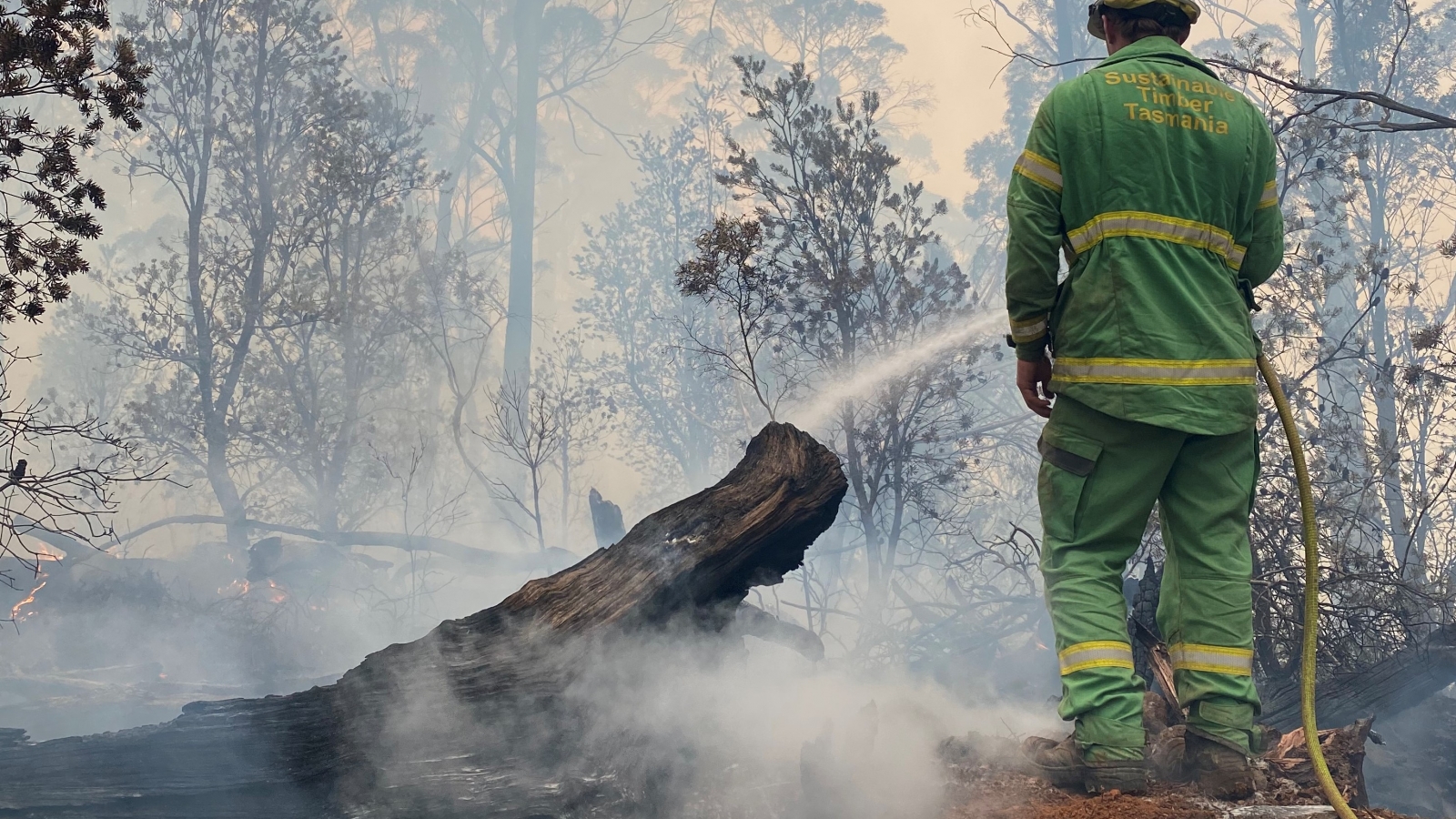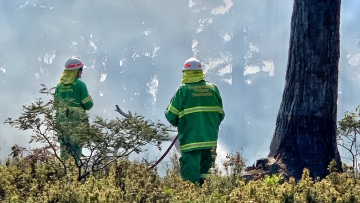
Fire management
Sustainable Timber Tasmania is one of the State’s key firefighting agencies. We are obliged to control and extinguish any bushfires that occur on the land we manage, and many of our staff are trained firefighters, planners and incident controllers.
Sustainable Timber Tasmania staff make a major contribution to fighting bushfires across the state, and also in contributing to statewide fuel reduction burning programs. For more information, see Fact Sheet No. 4 Bushfire management in the tab below.
Our priorities when fighting bushfires are to protect life, property, community assets and forest resources.
In 2014 the National Bushfire Management Policy Statement for Forests and Rangelands was developed by all Australian Governments. This policy provides guidance for the evolution of effective and ecologically sustainable fire regimes within Australia. For further information, download National Bushfire Management Policy Statement for Forests and Rangelands (see attachment below).
In addition to fighting bushfires, Sustainable Timber Tasmania also conducts planned burns, see related content.
Inter-Agency Bushfire Management Protocol
Along with the Tasmania Fire Service and Parks and Wildlife Service, Sustainable Timber Tasmania is part of Tasmania's Interagency Fire Management Protocol.
This protocol is the only one of its kind in Australia, and ensures that streamlined communications, adequate resources and a strategic approach are provided for all bushfires in Tasmania, regardless of land tenure.
Under the protocol, Sustainable Timber Tasmania also fights fires on land other than the forests we manage.
Bushfire management principles
We organise our bushfire management activities around four principles: preparedness, prevention, response and recovery.
Preparedness - ensures that appropriate firefighting capacity is maintained, through programs such as staff training and maintaining fire trails and water storages.
Prevention - aims to minimise the incidence and severity of bushfire, through fire detection and fuel reduction burns.
Response - is the reaction to uncontrolled bushfires, and includes firefighting and investigation.
Recovery - includes post-fire activities, such as site rehabilitation and reviewing the effectiveness of prevention, preparedness and response procedures.
